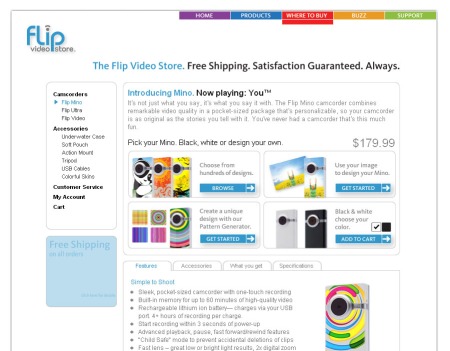Yahoo! has surprised me. Back in August it announced a new TV development platform called the Yahoo! Widget Engine. Developed together with Intel, this Widget engine was billed as the way to get Internet content and functionality to the TV set.
I’ll admit I was skeptical. We’ve heard so many announcements about getting Web content to the TV that my response was, “I’ll believe it when I see it.” Today I’ve seen it.
 Not just a demo of proposed functionality as is so often the case. But I’ve seen a line of partnerships on the device and content sides that backs up Yahoo!’s claims. And though it will be hard for average viewers to grok why, this is the most important TV-related announcement to come out of CES.
Not just a demo of proposed functionality as is so often the case. But I’ve seen a line of partnerships on the device and content sides that backs up Yahoo!’s claims. And though it will be hard for average viewers to grok why, this is the most important TV-related announcement to come out of CES.
Why, you ask? Because most CES announcements are specific to one device or service. A new video editing software suite, a new portable media player, a new 3D television. Even the announcement from LG that it would build Netflix into a line of TVs is a single-device announcement. Interesting, innovative, and pointing us in the right direction, but ultimately limited by the reach of that single device.
Yahoo!’s announcement, on the other hand, is already having a broad impact. Check yesterday’s press release for more detail if you need it, or better yet, see the whole scenario by visiting the Yahoo! Connected TV site, but here’s the list of TV makers who have signed on to build Yahoo! Widget capabilities into their TVs: Samsung, Sony, LG, & Vizio. Three on that list are hungry market share grabbers who are rising rapidly. Sony is a long-established player whose inclusion on the list teaches us something about the future of the connected TV.
In the old days (read: 2008), connected TVs were built around walled content gardens that required the TV maker to strike content deals and figure out how to promote the content to the viewer. TV viewers are notoriously routine-driven so breaking into their routines was particularly difficult to do. Hence, connected TV activities on HP and Sony devices have been modest to date.
In the new world, TV makers will simply provide access to a common platform, the way a PC does. Think about it: when you buy a PC from Dell, you aren’t limited to the software that Dell has programmed, or even software that Dell has chosen to license to you from 3rd parties (the way the iPhone app store works, hmmm, how old fashioned, eh?). You buy a PC from any maker, it runs software from any developer.
That’s the promise of Yahoo!’s TV Widget Engine. As long as sufficient TV makers adopt it, it will become an open standard for putting content on the TV. Open standards, once adopted, enable content innovation.
What content, you say? Here’s a list of people beyond Yahoo! itself developing TV Widgets so far, a list which is likely to increase by a factor of 10x as soon as a million people have Widget-capable TVs: Flickr, eBay, MySpace, CBS, The New York Times, Netflix, Amazon, Blockbuster, Showtime, USA TODAY and Twitter. All major names whose inclusion is likely to tempt others to fall in line.
I’m meeting with Yahoo! at CES to talk about the future later today. For the first time in a long time, I see Yahoo! playing a significant role in the future of interactive content. Bully for them. It’s just a question of how long until Google decides to jump in and whether TV makers will want to support multiple widget or application systems on their TVs. Plus, I wonder what the long-term payoff to Yahoo! is for building this open system. We’ll talk all of that through.
This is yet another example of how the software and Internet community is innovating ahead of cable. TV widgets are something cable and satellite have been toying with for years. But they develop too slowly and reach too few customers with their trials to have had an impact. We’ll see how quickly Yahoo!’s Widget Engine can make us forget cable’s attempts to add interactivity to the TV screen.



 Posted by James
Posted by James 




You must be logged in to post a comment.